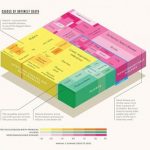When our government first started releasing Dietary Guidelines for Americans in the early 1970s, they did with the alleged premise of helping people find and eat nutritious food in order to avoid malnutrition. Unfortunately, from the moment they were released we started to see irreparable damage to the way that Americans eat. These are the guidelines that helped create the notions that ‘fat makes you fat’ and ‘eating cholesterol clogs your arteries.’ While the difficulty of conducting good nutritional science makes it almost impossible to come to accurate conclusions about which foods make us healthy and which ones make us sick, that didn’t stop the government from pouncing on unsettled science to create recommendations that have created ripple effects everywhere from the classroom to the grocery store.
The earliest research on nutrition (which became the basis of the first dietary guidelines) was driven primarily by epidemiological studies and food frequency questionnaires. Epidemiologic studies are great to help us come up with hypotheses to test in order to prove a cause and effect relationship, but it doesn’t take a Nobel Laureate to recognize that correlation does not equal causation. And have you ever filled out a food frequency questionnaire? These notoriously unreliable surveys ask you to attempt to quantify your dietary habits over the past weeks and months, a task that essentially no one is able to do precisely.
But despite the absence of strong evidence, Dietary Guidelines were released and this became subject to the same slow moving change as every other long document codified by the federal government. These guidelines need to be recognized for what they are: a political document that’s as much the result of lobbying and dealmaking as it is a reflection of the best evidence about the type of foods that make us healthy and unhealthy.
The biggest problem I see isn’t that the first guidelines were based on bad science (although this remains awful). The real issue is the unforeseen consequences of the government releasing a document telling us what we should and should not eat. Now the guidelines get rolled out to the media, taught in schools, and manipulated by the food industry. All of a sudden we’re playing telephone with bad data – but in this case, rather than a funny message that we can all laugh at, our health is being manipulated. It’s no surprise that chronic disease and obesity has accelerated in the decades since the first guidelines came out. But now we’re subjected to the glacial pace of a federal bureaucracy attempting to integrate improving science into outdated dogma.
Although the new Dietary Guidelines for Americans haven’t yet been released, we have a pretty good idea what’s going to be in them thanks to the Dietary Guidelines Advisory Committee releasing its synthesis of the evidence about what Americans should be eating. And in some ways, the news is good. There’s more of a focus on sugar and less of a focus on fat (although they completely miss the boat on saturated fat). But these incremental steps don’t undo the massive damage that’s been caused by these guidelines over the decades




